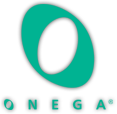Microsoft's Surface range consists of the SurfacePro tablet computers (the current line-up includes the SurfacePro 3 and SurfacePro 4 series) and the SurfaceBook which is a convertible laptop that can run in traditional laptop or folded screen only mode. They were originally introduced by Microsoft as much to point the way to the rest of the computing industry on design and what could be achieved, as to an actual product to sell to users. Given that Microsoft produce the Operating System for the majority of computers in the world it is not good form to be seen as competing with your clients.
In the object of taking direction, Lenovo have done so with their successful Yoga range which includes a series of convertible computers and Fujitsu (who have always been strong in tablets) have brought out new convertibles in the form of the nattily named Stylistic R726 which has been well received. However, the success of the SurfacePro range has taken even Microsoft by surprise and they sold over six million units in 2015 with 2016 likely to be double that.
Onega have been working with Microsoft products since MS-DOS 3.2 and although Microsoft is primarily known for its software, they have, for many years, made hardware which is known for being at the premium end, but reasonably priced for what it is. For example you'd always find a safe and dependable choice in a Microsoft keyboard and mouse. The SurfacePro computers are definitely at the premium end of the market and are very slick computing devices which have had very good feedback from users.
Until now, availability of the computers has been quite limited so you'd have to go to John Lewis or other big retail providers, or buy direct on the MS Surface website. Microsoft is expanding its channel to selected partners and we're happy that Onega have been accepted in the latest round as an authorised reseller. This means that we can provide clients with best pricing and support on the Surface range.
In another innovation, Onega and Microsoft are also making it easy to access the benefits of the Surface range. You can take the traditional route and buy a SurfacePro or SurfaceBook, but we can now also offer the choice of 'Surface as a Service' which allows a bundle of Surface hardware, software (if needed) and services to be made available for a monthly subscription. When the hardware and the warranty services are bundled this way there is no barrier for obtaining the very latest technology, with the peace of mind of a full warranty including accidental damage cover and a very reasonable monthly investment - you should, in any case, make sure your computers are covered under your general business policy for loss or theft.
The Surface as a Service scheme offers same day finance acceptance and we only need basic details to get approval in principle.
What do we think of the Surface and why would you consider this vs competitors? The Surface is a very slick computer which provides a lot of computing power at your fingertips and runs full MS Office and other Windows apps. If you try the touch and pen interface for handwriting or just drawing on the screen then having only a keyboard again can feel limiting on any other laptop. Potentially the Surface can save you from needing to carry around both a laptop and an iPad.
Any computer is a compromise between cost / weight / capacity / build quality / speed / expandability / badge / serviceability etc. We often think of a laptop as being the 'sports car' of the computer world in that they are great machines but you have to make choices (unless you have an unlimited budget) to get things right for your needs. The SurfacePro ticks most boxes. The one 'gotcha' with it is that, due to the focus on ultra slim build, the spec you buy is the spec you'll finish with, in that the case is glue sealed, so you cannot upgrade memory or storage. So it is important to specify enough up front for your foreseeable needs. The comprehensive extended service warranty means that any service problems are dealt with by an advanced swap out if you have any hardware issues.
Competitors like Apple also go for the sealed device approach (seen any screws on the back of your iPad lately?) but others like Fujitsu do allow for upgrades and servicing at the slight (very marginal) expense of size and weight.
Post Brexit the British pound has been dropping in value against both the Euro and US Dollar so computers have been going up in price lately but a good computer, at whatever price, is still excellent value, especially if you get a good few years' use out of it (big hint - best money - from £10 - you'll ever spend on a computer is on the case that protects your laptop).
Onega's aim is always to find the best fit for clients and to recommend the appropriate device for your needs - so please feel free to run any requirements by us and we'll be happy to discuss.
Happy computing.

